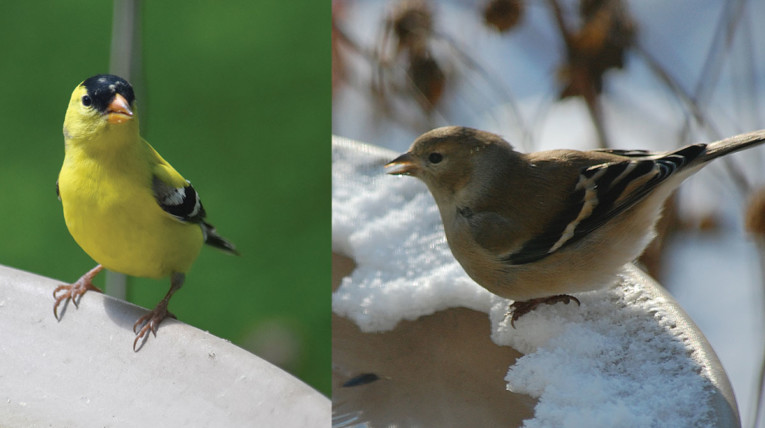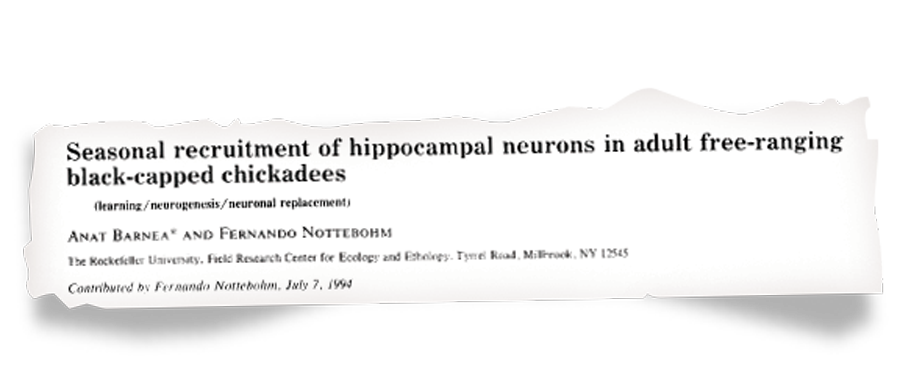While we simply get out our heavy coats, hats, gloves and boots for the winter, our backyard birds go through some amazing changes to make it through the cold and snow.
Behavioral Changes
We can all notice some of the behavioral changes birds make during the winter months. Some birds migrate. The other birds that stay tend to congregate in larger flocks and cover larger territory. These large flocks help them all identify food sources and spot danger quicker than individual birds.
Anatomical Changes
Feathers
Birds also go through some amazing anatomical changes to make it through our harsh winters. After breeding season, and before the cold, most birds molt. Birds need fresh feathers for the winter, including additional insulating feathers. Often the color of their feathers change. For example, the male American Goldfinch goes from his bright yellow breeding plumage to a more subdued olive-green color.

American Goldfinch in summer (left) and winter (right) plumage
Sexual Organs
Birds’ sexual organs actually shrink after breeding season and before the cold months. Sex organs in both sexes are enlarged and functional only during breeding season. During the winter season the organs shrink to make room for extra fat storage to get birds through the harsh weather. Come spring, when the day length increases, hormones are released to enlarge the sexual organs for the upcoming breeding season.
Brain Cells
Before the cold really begins another fascinating change occurs. Birds—in particular, chickadees—grow new brain cells. In the adult brains of birds, neurons are replaced periodically as the demand for memory space peaks. Chickadees discard cells that hold old memories that they don’t need and replace them with new cells that will allow them to store new memories. This helps them to remember where they’ve cached all the seeds over the summer and fall for that particular year; they don’t need to remember where they stored them the previous year. The part of the brain responsible for spatial organization expands by about 30 percent over the winter months. In the spring it shrinks back to its normal size.

A headline from the Proceedings of the National Academy of Science article about chickadee brain cell changes.
Torpor
Torpor is another fascinating anatomical and behavioral change to adapt to harsh conditions. In order to conserve energy and heat, birds enter torpor. Torpor is a state of slowed body functions. Birds enter a state of torpor, lower their body temperature and slow their heart, respiration and metabolic rate. Their metabolic rate decreases up to 95 percent. It’s like a short-term hibernation. Birds will use torpor to survive long winter nights or severe storms. Their reflexes and reaction times are also stunted when they are in torpor, making them more vulnerable to predators.
By Guest Contributor MELISSA BLOCK

